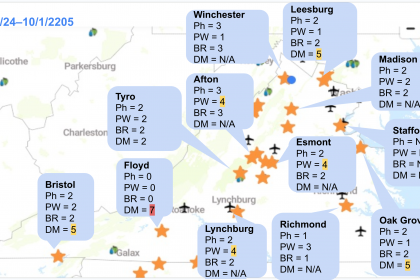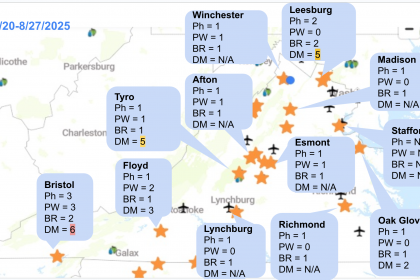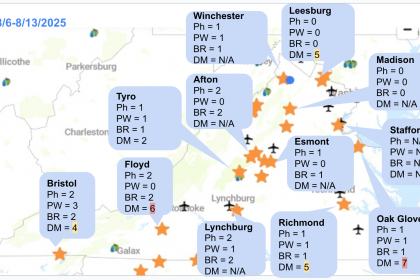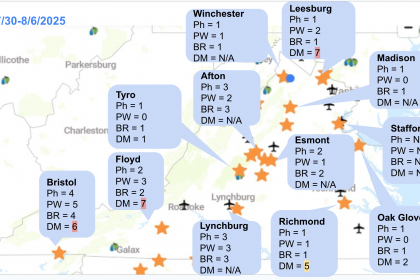
Here are snapshots from the last week, showing the number of days with the risk of each disease: Ph = Phomopsis, PW = Powdery mildew, BR = Black rot, and DM = Downy mildew. N/A means there is no data or some issues with the NEWA. This year, we have been using a different downy mildew model due to inconsistency with the NEWA model. This model uses the past five days of weather to estimate spore production and the next seven-day forecast to estimate the infection risk. There are several locations denoted as Low*, and what I meant by this is that the potential for spore formation has been low; however, more than four days of rain are forecasted in the next seven days. Thus, if your past spray was more than ten days ago, you may consider adjusting your sprays (whether you spray before the rain or add a phos acid after the rain) to lower the risk of downy mildew.
Due to relatively low mean temperature and humidity during the nighttime, risks of downy mildew have been low in the past month or so. However, several growers mentioned to me that they saw powdery mildew. If you have severe powdery mildew issues, the best approach is to use Sulfur, Copper, Potassium Salt, or Oil. If you use oil, do not mix it with sulfur or captan (or have at least two weeks in between sprays). Do not use DMI or SDHI fungicides against ongoing powdery mildew. You will increase the risk of fungicide resistance at your vineyard. Please see the post-bloom grape disease management slides here.
Just a reminder: the next Virtual Viticulture meeting is 7/11, next Thursday, from 1 PM.
Pre-Harvest Interval
Please keep an eye on the PHI. Mancozeb products have a 66-day PHI; at this point, you cannot use it for cultivars harvested in late August. Please see our Pest Management Guide for the list of the PHI and REI, or better yet; please use grapeIPM.org, which automatically calculates both PHI and REI once you enter your spray record.





